Weapons & Armor Dungeons & Dragons Depicts Inaccurately
The weapons and armor sets seen in Dungeons & Dragons – longbows, leather armor, etc. – owe more to pop-culture preconceptions than actual history.
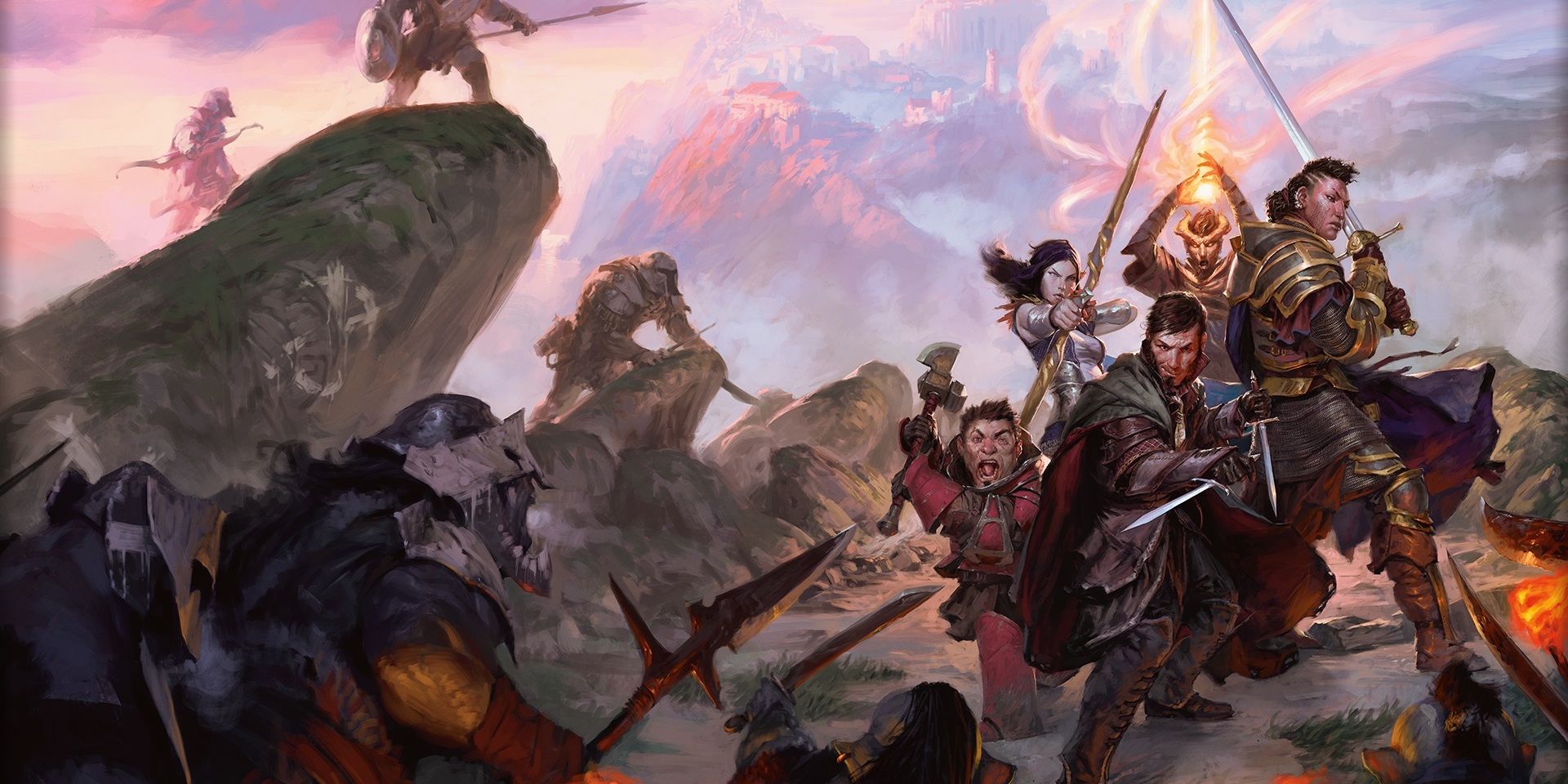
As a tabletop "simulator" of medieval fantasy adventure, the roleplaying game Dungeons & Dragons purportedly blends purely fantastical elements like elves and dwarves, magic and monsters, with narrative tropes supposedly drawn from medieval history - swords and shields, plate armor and leather vests, kings, queen, noble knights, guilds, etc. "Supposedly" is the key word here, for a lot of the medieval weapons and armor in Dungeons & Dragons are depicted inaccurately – both in terms of description and their mechanical utility.
Gary Gygax and Dave Arneson, the co-creators of the original Dungeons & Dragons RPG, probably would have been familiar with medieval history thanks to being fans of historical tabletop wargaming long before they devised the rules for the world's first roleplaying game. They weren't professional medieval historians, however, and a good portion of the "Medieval" world-building details they injected into D&D were drawn from fantasy novels, period movies, and common pop-culture misconceptions, particularly when it comes to weapons and armor from the Middle Ages.
A lack of realism isn't always a bad thing in tabletop RPGs. Indeed, Dragons, Magic Missiles, and other unrealistic parts of D&D are a big part of what makes the game so great! D&D Dungeon Masters who do want more verisimilitude in their games should definitively learn more about the arms and armor "goofs" listed below, and what medieval combat was actually like back in the day. By infusing their campaigns with real historical details about how men and women fought hundreds of years ago, DMs can give their games a subtle authenticity players will notice and enjoy.
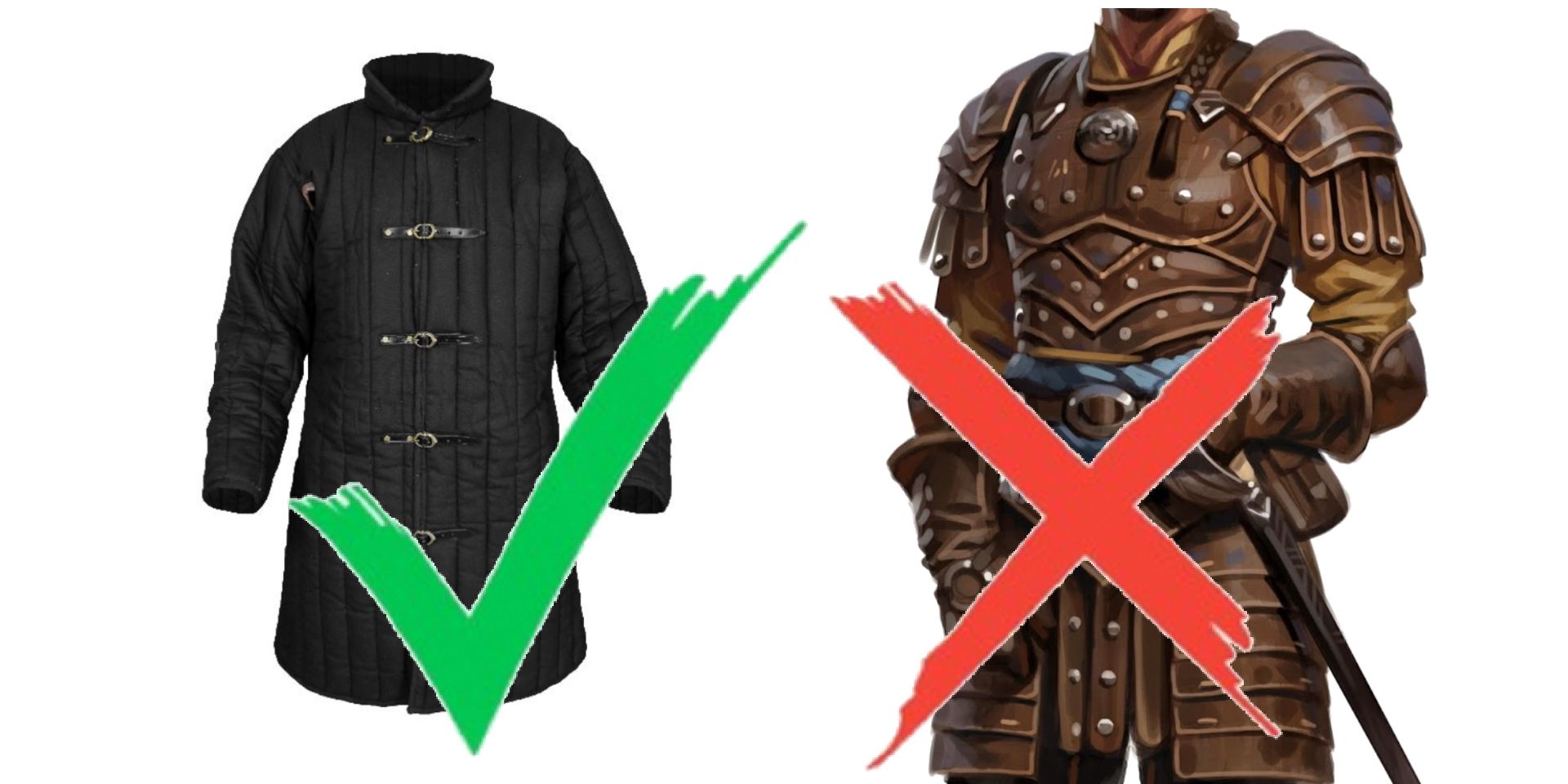
The terms Dungeons & Dragons 5th edition uses for for certain types of medium and heavy armor, like half-plate, splint armor, or chain mail, are a little vague compared to the terms actual military historians use (almain rivet, brigandine, hauberk), but do more or less correspond with real medieval plate, mail, and scale armor types. When it comes to light, non-metallic armor, though – padded armor, leather armor, hide armor – the D&D armor list gets a lot wrong.
Hide Armor – that is, raw untreated animal hides crudely stitched together into a protective vest – never existed outside movies, books, and video games featuring "noble savage" barbarians. So-called "barbarian" cultures such as the Norse, Goths, Gauls, and Picts wore armor of metal and treated cloth just like their "civilized" opponents. Padded Armor, the weakest of the armor sets in D&D 5e, was actually far more useful in real life than the RPG implies. The Ancient Greek "Linothorax," made of layers of glued linen, reliably blocked arrows and spear-thrusts, while the medieval "Gambeson" jacket, made of quilted layers of cotton, linen, and wool, could ward off bludgeoning and cutting attacks.
Leather armor did exist in medieval times, but not in the form-fitting, flexible style D&D artwork or TV shows like Game of Thrones showcase. To protect its wearer from bludgeoning, cutting, and piercing attacks, the leather in a suit of armor had to be boiled into a rigid, stiff form. For this reason, many historical forms of leather armor, particularly the suits worn by Byzantine Cataphracts, Mongolian horse archers, and Japanese Samurai was lamellar, with rigid tiles of leather and metal woven together into scaled layers of protection.
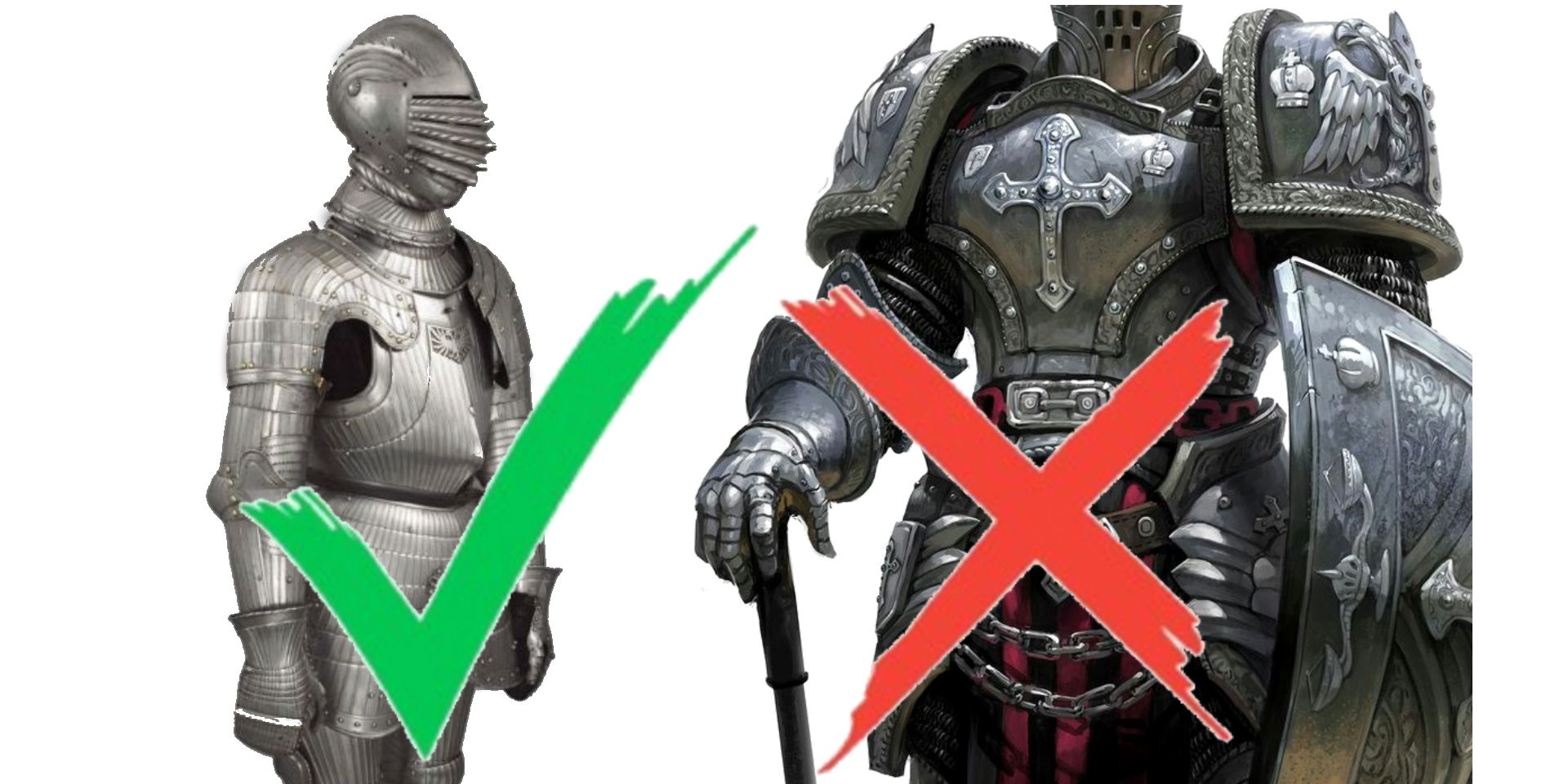
Most people these days realize the Victorian myth of clunky, clumsy plate-armored knights being hoisted onto their horses via crane is just that - a myth. Even so, it's easy to overestimate the weight of a full suit of plate armor and underestimate the flexibility and mobility of knights and men-at-arms who wore them.
The equipment rules on D&D Beyond claim an average set of Plate Armor weighs 65 pounds; in contrast, historians from the Metropolitan Museum of Art claim most historic, battle-ready suits of plate actually weighed close to 45 pounds, a lighter burden further lessened by the suit's even distribution of weight across the chest, head, and limbs of the body. A strong, well-conditioned knight in a suit of plate could vault over fences, climb onto horses, and do forward rolls without much issue (no Demon's Souls style "fat rolling" here). At the peak of the armorer's craft, a well-made suit of plate could repel arrows, sword-swings, axe blows, and even, under the right circumstances, bullets from a gun.
In most Dungeons & Dragons campaign settings - Eberron, Dragonlance, Forgotten Realms, Planescape - muzzle-loading firearms are conspicuously absent, presumably because setting creators feared the presence of firearms would make steel armor, shield, and other cool medieval gear obsolete. In real-life, though, there are several steel breastplate artifacts from the Late Medieval/Early Modern era with "Bullet-proof" marks, round dents in the armor where a round bullet impacted but failed to penetrate. Many of these marks were probably made by armorers trying to show off the strength of their armor, but even so, breastplates, steel helmets, and suits of plate co-existed with matchlock muskets and bronze cannons for centuries, capable of resisting bullets from a distance, if not at point-blank.
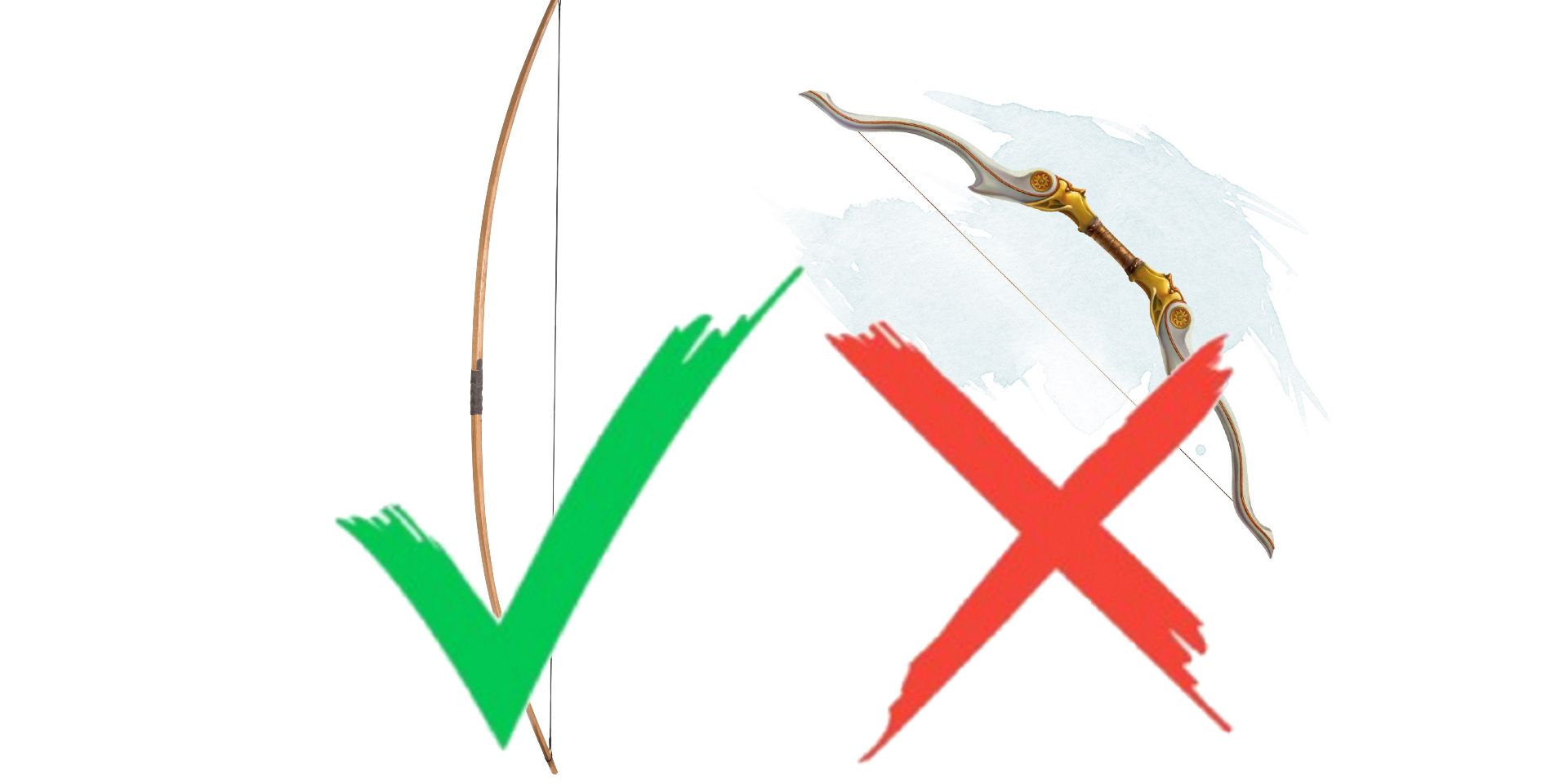
In Dungeons & Dragons, weapons are divided into two categories: there are Strength weapons, which use a player character's strength score to calculate accuracy and damage, and Dexterity Weapons, which use the wielder's dexterity score. Most melee weapons in D&D are Strength-based, while most ranged weapons are Dexterity-based, leading to scenarios where min-maxing players create a high-Str, low-Dex warrior who can cleave a bear in half with their Greataxe but can't tie their shoelaces, or a high-Dex, low-Str archer who can shoot a bear's eye out with their long-bow, but can't win an arm-wrestling match with a frog. Besides being just plain silly, these character builds are just plain ahistorical.
Anyone who's ever fired a hunting bow knows an archer needs plenty of strength to pull back the bow string to its proper firing length. Beyond hunter bows, the longbows and composite bows used by medieval militaries likely had draw weights close to 80 pounds (a figure historians from Cambridge University derived from mathematical modeling and experimental bows made by historical re-constructionists). Essentially, an archer from the Middle Ages would need to be both strong and dexterous to use their bows to their fullest potential.
Melee weapons like swords, maces, and halberds also required a good mix of strength and dexterity, though not as much strength as modern people thin. The average one-handed European arming sword weighed a mere 2-4 pounds, while even the heaviest two-handed "Zweihander" great-swords rarely weighed more than 10 pounds. The "slab-of-metal" greatswords seen in many fantasy games (Cloud Strife's Buster Sword, for instance) would have been a source of back-aches on the battlefield, while also being too momentous to control.
Contrary to the abstract rules of Dungeons & Dragons, which encourage players to specialize in either Strength or Dexterity, true weapon masters of the Middle Ages cultivated every physical quality: dexterity to strike accurately with a weapon, strength to make it hit hard, and stamina to keep swinging over and over. Theoretically, the Dungeons & Dragons RPG combat rules could be hacked so that Dexterity would act as an accuracy bonus, Strength would act as a damage bonus, and Stamina would determine how long a player could keep swinging their blade without suffering from exhaustion. A sweeping rule change like this, however, might unbalance D&D gameplay or de-incentivize players from specializing their characters.
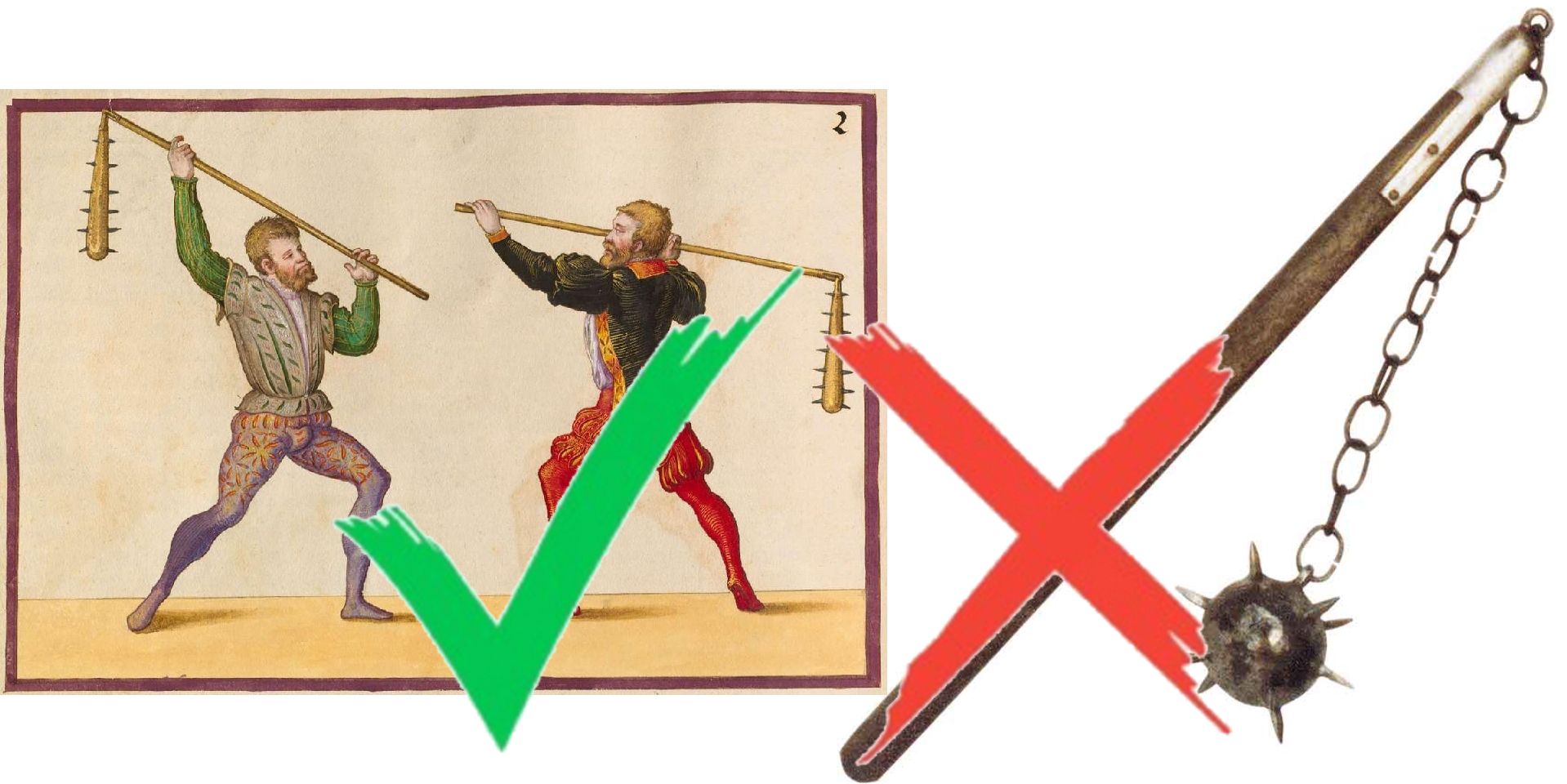
The medieval flail, seen in late medieval artwork, Dungeons & Dragons weapon lists, and modern medieval films like Kingdom of Heaven, is a variant of one-handed mace where the spiked head dangles from a short chain. Knights on horse-back purportedly twirled this weapon before striking with it for extra impact. It looks brutal, intimidating, barbaric... and was probably never an actual military weapon.
Historically, most flails were agricultural tools used by farmers in various cultures to thresh out grain. Nunchucks, the martial arts weapon famously used by Bruce Lee in his martial arts films, allegedly started out as a farmer's tool adapted to Okinawan martial arts, while flail-heads mounted at the end of long staves were occasionally used by impromptu weapons by European peasants who had to fight. Few of the one-handed steel-forged flails found in museums and collections actually date back to medieval times, strongly suggesting the flail was more of a collector's item for the rich than an an actual, practical tool of war (comparable to those needlessly ornate fantasy swords sold on modern day "martial arts" websites). It's strangely appropriate that Dungeons & Dragons, an RPG built around fantasy elements, includes flails and other weapons of a purely fantastical origin.
Source: D&D Beyond, The Metropolitan Museum Of Art, Cambridge University Press
